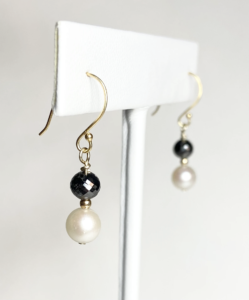
Recently a friend of mine obtained some black diamond beads, only to take them to a jeweler and be told they do not test as diamonds. This particular woman owned black diamonds, and nothing about them stood out as concerning. This had me questioning my own supply I had just received from a different supplier.
Under magnification, I saw uneven fractures, but I also noticed some waxy luster conoidal (shell shaped) fractures too—not typical with diamond. My stones also did not pass a thermal conductivity test (diamond tester). Panicked, I contacted my vendor—who also panicked, as they had trusted their source. I ensured him I would investigate further…
What I learned is, unlike fancy black diamonds, which tend to be single crystals with heavy carbon inclusions and are mined in open pit kimberlite deposits, “carbonado” diamonds aren’t.
The Gemological Institute of America (GIA) put out a good article in 2017 on this very subject https://www.gia.edu/gems-gemology/summer-2017-carbonado-diamond. Findings are “carbonados” come predominantly from South America and how they got there is still not known. They are actually polycrystalline in nature, created from a bond of “micro-diamonds” and carbon. This explains why some pieces don’t pass the diamond tester; as diamond testers are designed to test thermal conductivity of a monocrystalline gem.
Carbonado diamonds are relatively inexpensive. Recent marketing strategies have successfully sparked interest with consumers who are looking for something affordable and different.
